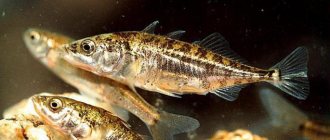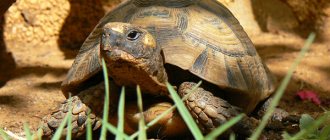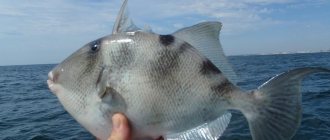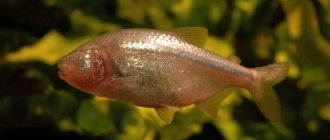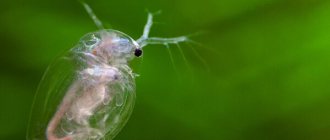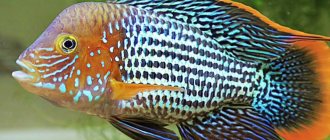The urchin fish is considered an unusual inhabitant of the seas and oceans, the name of which is fully justified by its specific appearance. In appearance, this is an ordinary fish, but sensing danger, it turns into a huge ball, covered with many sharp spines with poison.
The hedgehog fish has powerful jaws
This ability protects it from attacks by predators and makes it inedible; it can remain in an inflated state until it is sure of its safety. The urchinfish is a sea football with a lot of sharp and poisonous spines.
Origin of the species and description
Photo: Fish hedgehog
The hedgehog fish belongs to the class of ray-finned fish, the order of pufferfish. There are ten families in the order, among which one of the representatives is urchin fish. The closest relatives are puffer fish, box fish, and triggerfish. Thanks to its unique ability to instantly inflate its body, the hedgehog fish received the nickname ball fish or porcupine fish. The hedgehog fish belongs to the family Diodontidae, which has about 20 subspecies.
The most common of them:
- long-spined diodon;
- Diodon vulgaris (spotfin);
- black-spotted diodon;
- pelagic diodon.
The family of pufferfish arose more than 40 million years ago. A distinctive feature of hedgehog fish is the absence of pelvic fins, and the dorsal fin is located closer to the tail of the fish, almost at the same level as the anal fin. In hedgehog fish, the teeth consist of two hard plates, reminiscent in shape of a bird's beak, with which they are able to grind solid food.
Video: Fish hedgehog
Another characteristic feature of this family is elastic skin with prickly spines, which are located on each of the scales. Urchinfish have weak fins, so they are mediocre swimmers. They could easily have become prey for a larger predator, but a special defense system made their life safe.
You need to know this! Some representatives of the Two-Toothed family are deadly, as their insides contain deadly poison. It is so strong that even after cooking it remains dangerous. For this reason, if fishermen catch a hedgehog fish in their nets, they prefer to throw away the entire catch.
Habitat
Tetraodons are inhabitants of the rivers of Asia and Africa; their habitat ranges from Indonesia to the northern Chinese provinces. In different places this fish is known by different names: ball fish; pufferfish The fish settles in estuaries, streams, rivers and floodplains. Tetraodon is suitable for both fresh and brackish water, in which individuals live in small schools. Some of them prefer to live alone. In nature, these fish prefer to feed on snails, crayfish, crabs, shrimp and aquatic plants. They can bite fins and tear off scales from other fish.
Appearance and features
Photo: Sea urchin fish
It is worth dwelling separately on the peculiarity of the hedgehog fish, which increases in size and becomes a prickly ball. Just below the throat the fish has a special pouch with many folds. In case of danger, it swallows water or air in a matter of seconds; if the fish is on the surface, this bag is filled with water or air, and the fish itself becomes round, like a ball. This process has the ability to increase one hundred times its normal size.
The skin of fish consists of two layers: the outer layer is thin and very elastic, and the inner layer is folded and more durable. In a calm state, the spines are pressed to the body, and when danger comes, the skin stretches and due to this they straighten. Ten-day-old fry already have the ability to protect themselves in times of danger.
Outwardly, all urchin fish are similar to each other, but if you compare the subspecies of this family, there are characteristic differences between them. They are mainly distinguished by the size of adults and the location of spots on the body.
An adult long-spined urchinfish reaches 50 cm. The fry have brown spots on their bellies, which disappear when the fish reaches maturity. Adult fish have a white belly without spots. There are spots of different sizes near the eyes, on the back and on the sides. The fins of this fish are transparent or have a slight yellowish tint. The long-spined Diodon is called Holocanthus, and this subspecies is most often chosen for keeping in an aquarium.
The spotted fin diodon also has rather long spines, which makes it look like a long-necked urchinfish. It differs from its relative in that the body and fins are covered with many small spots. Even on the belly, if you look closely, you can see barely noticeable spots. They grow up to 90 cm. The black-spotted diodon reaches 65 centimeters in length. Distinctive features of this subspecies are short needles, dark spots with white edging throughout the body, two large spots on the fish’s face (at the gill slit and near the eye), the dorsal and anal fins are decorated with small spots.
You need to know this! The long-spined, spotted-finned, black-spotted hedgehog fish is considered poisonous. The skin and liver contain poison several times stronger than potassium cyanide.
The smallest representative of the urchin fish family is the pelagic diodon. Its body reaches a maximum length of 28 cm. The back and sides are decorated with small spots that are located along the entire body. The fins are pointed at the ends, with small dark spots. There is no evidence that the pelagic diodon is a poisonous fish.
How to choose a good product
Sea urchins are sold in the fish deli section of large supermarkets or in specialty fish stores. When purchasing, be guided by the following rules:
- needles are the main feature of a fresh echinoderm . If they stick out to the sides, then this is an old product. In fresh sea urchin, the spines fit tightly to the body;
- freshness can be determined by the juice . This method was invented by the Japanese. You need to cut the beak with a special knife and drain the juice. A stale echinoderm will have cloudy juice;
- It is better to buy sea urchin caviar (photo below in the article) already packaged in jars . When purchasing, check the production date and expiration date of the product.
Where does the hedgehog fish live?
Photo: Spiny hedgehog fish
Various members of the Diodon family prefer tropical and subtropical climates.
They can be found in the Pacific, Atlantic, Indian oceans, namely:
- Quiet - southern Japanese coast, Hawaii;
- Atlantic - Bahamas, USA, Canada, Brazil;
- Indian - Red Sea, coast of India and Australia.
Adult fish prefer to stay on coral reefs, since they serve as shelter during the daytime and as a dining room at night. They can be found at depths of up to 100 m. In contrast, diodon fry stay on the surface of the water, seek shelter in algae and go to the bottom when they mature.
Of all the subspecies, only the pelagic diodon is not tied to a specific place and prefers to drift with the current most of the time. Diodons are weak swimmers and do not know how to swim against the current, so they are often carried by a strong undercurrent to the Mediterranean Sea or the European coast.
Diodons are predominantly marine inhabitants, but some of them have managed to adapt to fresh water and can be found in the waters of the Amazon or Congo. Despite the fact that hedgehogs do not often become prey for other fish, they still settle in places where they can safely hide so that no one disturbs them during the day.
Chemical composition, calorie content and nutritional value, glycemic index
Nutritional value is calculated as follows: 13.8 grams of protein, 4.3 grams of fat, carbohydrates account for 2.5 grams. The glycemic index of the product is below 15 units .
The product is low-calorie. One hundred grams contains only 84 kilocalories. Caviar is a little higher in calories: there are 104 kilocalories in one hundred grams.
Sea urchin and its caviar are rich in vitamin and mineral composition. Echinoderms eat algae and accumulate useful substances. Contains:
- B vitamins – are involved in the functioning of all vital systems of the body. The product is a leader in vitamin B12 content. Its amount is four times higher than in beef liver;
- vitamin E - normalizes the functioning of the reproductive system, improves the health of skin, nails and hair;
- Vitamin D - takes an active part in the exchange of mineral elements. Improves the condition of teeth and bones, affects the process of cell regeneration;
- Vitamin A - improves the functioning of the visual organs. Essential for healthy bones, skin, and nails. It is an antioxidant that boosts the immune system;
- micro and macroelements - calcium, magnesium and potassium, iodine, phosphorus. The product is one of the five leading products in terms of magnesium and sodium content;
- Omega-3 and Omega-6 fatty acids;
- amino acids – glycine, phenylalanine, glutamic acid.
What does hedgehog fish eat?
Photo: Fish hedgehog
Diodons, despite their modest size, are predators. Their main delicacy is coral shoots. Thanks to the structure of their teeth, they are able to bite off small pieces of coral and grind them. It must be said that only a small part of this food is digested. Most of what was previously coral reef remains in the stomach. In some cases, up to 500 g of such remains were found in the stomach of diodon caught by fishermen.
In addition, the diet of urchin fish includes small mollusks, sea worms and crustaceans. If the caught prey is hidden in a shell or protected by a shell, it costs the fish nothing to chew through this protection. In addition, diodons can attack other fish, biting off their fins or tails.
If Diodon is kept in artificial conditions, the diet includes fish food that contains algae. You should also be able to grind down your teeth; for this purpose, shrimp are included in your daily diet. Without this treat, Diodon can become aggressive, attack other inhabitants, and begin to overgrow its teeth.
You need to know this! Hedgehog fish do not disdain carrion, and in some cases they can attack their own relatives.
Conditions in the aquarium
Basic rules for keeping hedgehog fish:
- aquarium volume – from 284 liters or more;
- water temperature – 24-26 degrees;
- acidity index (pH) – 8.1-8.4;
- water salinity – 1,020-1,025;
- filler for the bottom of the container - coarse sand (layer 8 cm), rocky grottoes, driftwood.
There are high demands on water quality, so one individual should be kept in aquariums of 200-500 liters. If the capacity of the container is 800 liters or more, you can get a pair or a small group.
One individual hedgehog fish requires 200-500 liters of aquarium volume
Hedgehogs do not attract the attention of most fish species, but adult triggerfish and angelfish can exhibit aggressive behavior towards them. The ability to defend itself by inflating its spiked body is not a reason to keep these types of fish in the same aquarium. Other large individuals may well live in the same aquarium with a prickly neighbor.
Features of character and lifestyle
Photo: Sea fish urchin
These fish are not those who prefer to gather in schools; rather, on the contrary, they stay apart and avoid meeting even with their own kind. Only during the spawning period does the male get closer to the female. Their life goes as follows: Diodon spends the day in a safe shelter, where he cannot be disturbed, and only with the arrival of night does he go out hunting. Diodons have developed good eyesight, which helps them find their prey at night.
Possessing such an unusual and effective method of protection, the hedgehog fish could feel safe in any conditions and swim without fear. They actually don't like to be puffed up. When a Diodon uses its defense, it becomes helpless until it returns to its normal state. There have been cases where dead fish were found that were never able to deflate after the danger had passed.
Despite their unsociability, hedgehog fish living in captivity quickly get used to humans and love to swim to the surface, begging for a tasty treat. It must be said that they do this often, since in the world of fish they are real gluttons. Their large “pug” eyes are often compared to the famous look of the cat from the movie “Shrek”.
Social structure and reproduction
Photo: Spiny hedgehog fish
Diodons reach sexual maturity at the age of one year. The male's courtship consists of him starting to pursue the female. After the female has reciprocated, the male begins to gently push her closer to the surface of the water, where the actual laying of eggs occurs.
After this, the male fertilizes her with milk from his gonads. One female is capable of laying up to 1000 eggs. Only some of them are fertilized. Immediately after spawning, fish lose interest in their future offspring, as well as in each other.
The ripening of the eggs lasts 4 days, after which fry emerge from them. From birth, they are similar in appearance to their parents, but at this stage of life their body is protected by a thin shell. After about ten days, the shell falls off to be replaced by spines. This process takes three whole weeks.
After this time, the baby hedgehog fish is already completely similar to its parents and knows how to inflate in a moment of danger. It differs only in more intense coloring. Until small fish reach a certain size, they prefer to stay together. In order not to become someone's prey, at the moment of danger they huddle together. At the same time, they become like a large ball with spines. This scares away the predator.
Until a certain age, small diodons stay closer to the surface of the water, where the water warms up more. Having matured, the fish go to the bottom, closer to coral reefs, where they lead the usual lifestyle for diodons.
You need to know this! In captivity, hedgehog fish reproduce extremely rarely, because this requires certain conditions.
Conversation with children about fish
Yana Polyakova
Conversation with children about fish
Description of the material: I offer educators a summary of an educational conversation for children of senior preschool age. This conversation will expand children’s understanding of fish, and riddles and an entertaining quiz will clarify and consolidate their acquired knowledge.
to clarify children’s knowledge about fish, their appearance, protective coloring, habits and habitats, to help consolidate the acquired knowledge about fish;
expand children's knowledge about relationships in nature; develop coherent speech in children through conversations about fish , logical thinking, creative imagination; activate and enrich the child’s vocabulary; to cultivate an interest in studying nature, caring for fish and all living things on Earth.
fins, fry, scales, aquarium, flounder, gills, catfish, pike, crucian carp, ruff, shark, caviar.
looking at illustrations depicting different types of fish, watching fish in an aquarium , talking about fish , about caring for the inhabitants of reservoirs.
fish - tokens , illustrations depicting the Little Mermaid, a boat, a crab, a frog, an encyclopedia with illustrations of fish, a recording of the sounds “The Murmur of a Stream”
,
"Sound of the sea"
).
Natural enemies of hedgehog fish
Photo: Fish hedgehog
Adult diodons have practically no enemies, since other predators are afraid to attack them. Only large predatory fish - sharks, dolphins, killer whales - risk attacking them. Such cases are rare. Only for them, diodone becomes the last meal; it gets stuck in the throat or injures the esophagus or stomach. As a result, the fish dies.
Perhaps the main enemy for exotic fish is humans. A favorite pastime of divers is inflating urchin fish. In addition, diodons are caught for making exotic souvenirs. They are used to make lampshades or Chinese lanterns to later sell to foreign tourists.
Hedgehog fish is a favorite delicacy among many peoples and an exotic, expensive dish in Asian restaurants. Some people prefer to marinate pieces of fish skin in a spicy marinade, while others fry pieces of meat in batter.
The fry have much more enemies. Very few fish survive from one litter to independent life. The favorite delicacy of tunas and dolphins are urchin fry.
You need to know this! On one of the Indonesian islands, one tribe made fearsome helmets for their warriors from hedgehog skin.
